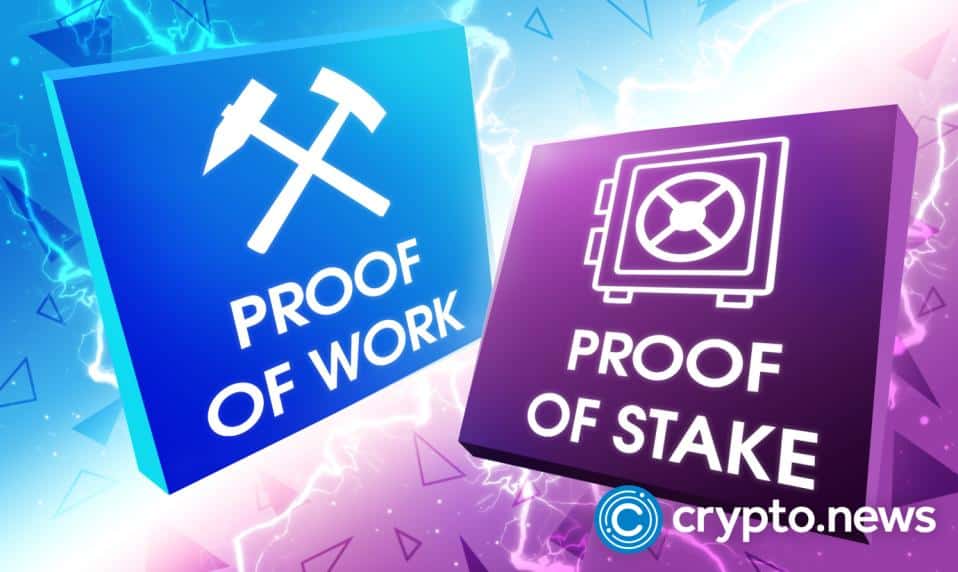Pros and Cons of Each Blockchain Consensus

While the common consensus mechanisms are PoW and PoS, there are several noteworthy alternatives. Many of these alternatives mix and match components from other encryption and consensus mechanisms. The evolution of the consensus mechanisms on the blockchain continues to be rapid.
What is a Consensus Mechanism?
A consensus algorithm is used to confirm and validate the transactions and operations of a blockchain. It eliminates the need for third-party verification. Blockchain aims to create a decentralized world where people can do whatever they want with their lives. It is done through the use of consensus protocol.
The consensus algorithm is a part of the blockchain that decides which block to be appended. It ensures that the network can continue to function properly.
Proof of Work (PoW)
The proof-of-work algorithm is a consensus that requires participants to complete a certain amount of work before entering information into the blockchain. The entry will not be made until all of them have stated that all the information is correct. To confirm the transaction, miners use the selection method.
The PoW consensus is a standard for developing applications requiring users to have a secure and authorized identity before accessing them. One of the biggest blockchains, Bitcoin, adopted this protocol.
Pros
- PoW is a relatively fast and scalable type of computing that folks can use for various applications, such as mining new tokens and validating transactions.
Cons
- The disadvantage of a PoW is that it can be susceptible to a 51% attack. A single attacker can take over a significant portion of the network’s computing power.
Proof of Stake (PoS)
PoS is a type of validation that uses a different hashing algorithm to determine blocks. Unlike traditional methods, it does not rely on a single algorithm to determine blocks. Instead, it validates them based on the miners’ stake. The number of validators chosen based on the amount allocated is random. The higher the stakes, the more likely they will be chosen. To improve its network’s scalability and reduce its electricity consumption, Ethereum adopted the PoS protocol.
Pros
- The nodes actively develop the ecosystem.
- It is possible to receive additional income for long-term users.
Cons
- Only the large old holders of coins can earn them. This method can lead to distribution problems as it limits the number of people who can benefit from the system. For instance, if the number of coins is limited, developers get a larger share of the profit.
- PoS coins have the disadvantage of having to be staking 24/7, making them susceptible to hacker attacks.
Delegated Proof-of-Stake(DPoS)
The DPoS protocol aims to reward the individuals who validate and maintain the blockchain network. They are also rewarded for their efforts by paying their transaction fee. This system works by a voting system, which chooses the individuals who help in the consensus state.
Those with more coins have greater voting power. DPoS is a secure digital voting system that can be used in applications requiring high throughput and verification speed.
Pros
- The DPoS voting system is transparent. Users can easily remove the offending delegate whenever they see something suspicious.
Cons
- DPoS is a decentralized network that’s partially centralized. With more coins, those with more power have more control over the network. It’s also vulnerable to attack because there aren’t enough people to keep it running.
Transaction as Proof of Stake (TaPoS)
The TaPoS consensus protocol prevents unauthorized activities, such as transferring money from one blockchain to another. Whenever a transaction is made, it must contain the most recent block header. The transactions that happen on the processors contribute to the success of mining. This type of transaction is a part of the PoS consensus protocol. It is a model of the PoS protocol.
Pros
- With this protocol, you can prevent replays of transactions across different chains, which is all the advantages of PoS.
Cons
- The protocol is not widely adopted, which is one of the disadvantages.
Proof of Elapsed Time
The Proof-of-Elapsed-Time algorithm is a derivative of the Proof-of-Work algorithm that uses a lower power consumption. It is commonly used to determine the miners’ block winners and mining rights on blockchain networks.
This system is based on the principle of a fair lottery system, which means that all participants have the same chance of winning.
Pros
- Equality: The function ensures that the participation of a wide range of participants is distributed when electing leaders.
- Investment: Managing the election process costs as much as it benefits.
- Verification: Anyone who participates in the decision can easily verify its legitimacy.
Cons
- However, it would help if you had special equipment to use, even though it’s cheap. For this reason, it cannot be used by most people.
- Public data networks are not suitable for this application.
Proof of Importance (PoI)
The concept of Proof of Importance (PoI) is a tool that allows nodes to create blocks. Folks can use it to demonstrate the utility of a system by analyzing various metrics, such as the amount of currency, transactions, and activity clusters. It can also help investors distinguish between regular and speculative transactions. One of the main advantages of this protocol is that it encourages the circulation of coins instead of keeping them in a hoarding state.
One of the main advantages of this protocol is that it allows investors to earn a higher score when transacting with others on the network. It encourages the circulation of coins instead of keeping them in a hoarding state. It can also develop applications that prevent people from hoarding coins.
Pros
- Using the PoI will reduce the hoarding of coins, and users will need to stake their currency to participate.
- In addition, it consumes minimal power and energy and requires no special hardware.
Cons
- The concept of the PoI consensus protocol limits the amount of mining that can be done. It means that the rich will get even richer as the miners earn more from the cryptocurrency they own.
Proof of Burn (PoBr)
The concept of PoBr addresses the issue of high energy consumption in a PoW system. Miners can earn additional blocks by burning their virtual currency through this system.
To burn coins, miners send them to an unspendable address. They can then exchange them for a reward in the blockchain’s native currency token. This method works on different currencies, such as Bitcoin. If a blockchain’s implementation is implemented correctly, miners can also burn their native currency.
Pros
- Unlike Proof of Work, which requires specialized hardware to distribute coins fairly, Proof of Burn mining uses a decentralized network to ensure that the coins are distributed fairly.
- It encourages miners to build long-term projects. This move will allow them to earn more money and maintain price stability.
- The Proof of burn protocol is commonly used for generating burn hashes, which are similar in terms of their values to those used to determine the block leaders of a PoW block. It can be beneficial for reducing the circulation of coins. Slimcoin is a cryptocurrency that uses this type of consensus mechanism.
Cons
- The main disadvantage of PoBr is that it is not always easy to verify the authenticity of the burning of coins. It means there is a delay in verifying miners’ work.
Proof of Capacity
The concept of megabytes as resources is used in the Proof-of-Capacity algorithm to distribute large blocks of data on a given hard drive. This method helps channel non-crucial resources and increases the likelihood of getting rewarded.
Pros
- It’s convenient for people who prefer cloud storage and have advanced computers with free disk space.
Cons
- It is better to buy an ASIC miner than lose money on disk space. Having a dedicated hardware solution is more profitable than having one already available.
Byzantine Fault Tolerance
The concept of a Byzantine-Fault-Tolerance algorithm is that regular coin holders can vote for a delegate to decide whether or not to approve or block a transaction. This type of algorithm is commonly used for remote transactions. There are two kinds of solutions to the problem of conflicting messages: the practical-byzantine-fault-tolerance solution and the framework known as the FBA. The former allows the general to sort through the messages and establish the truth.
Pros
- Users can protect against system failures through collective decision-making. It can also help minimize the impact of faulty nodes on the network.
Cons
- Trust must be established between participants.
Author’s Word
In this article, we have discussed advantages and disadvantages of each blockchain consensus. Although there are no single-fits-all protocols, this article will help you choose the right one for your project. Notaly, understanding the mechanics of cryptocurrencies is very important, as it can affect their long-term usability and value.















